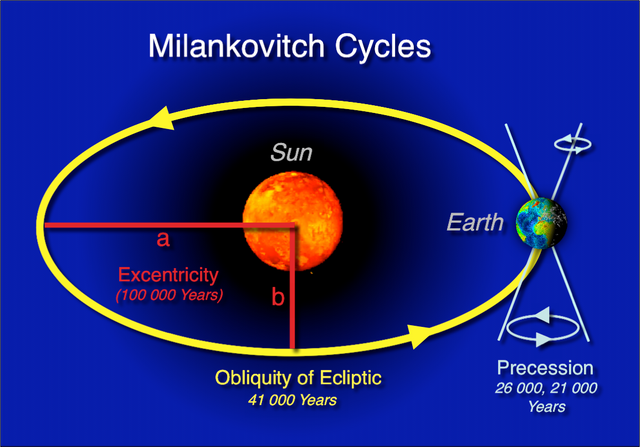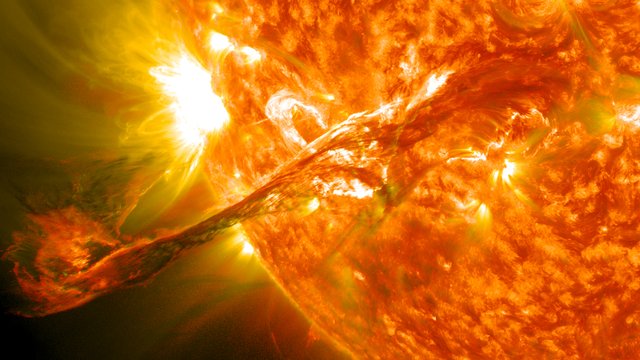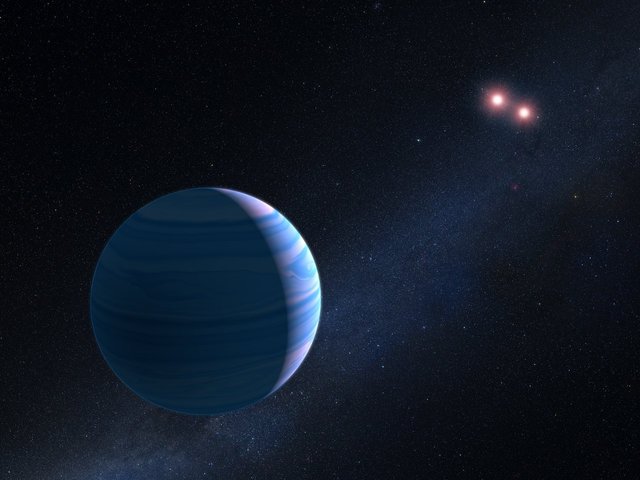Da Vinci Times #8.3
A 405,000 years climate cycle
Analyzing rock samples from different eras, a group of researchers has been able to identify a climate cycle that is repeated every 405,000 years, for at least 215 million years. The reasons for this cycle? Jupiter and Venus.
 Imagine CC0 Creative Commons - Source
Imagine CC0 Creative Commons - SourceThe combined gravity of these two planets changes the shape of the Earth's orbit, which affects the amount of heat received by the Sun, and consequently the planet's climate. An important result, because it adds another piece to the puzzle of climate change. To understand the future of a dynamic system as the earth's climate, knowing every single factor of influence is fundamental. This is the cycle (among those due to astronomical factors), more regular ever discovered.
Immense waves on the Sun.
Rossby waves have been observed for the first time on the Sun, a phenomenon that occurs in large fluid masses, such as the oceans and the atmosphere.
 Imagine CC0 Creative Commons - Source
Imagine CC0 Creative Commons - Source
Rossby waves are a phenomenon known to climatologists, because they are essential to understand the dynamics of the Earth's climate. Similarly, observing them on the Sun is an important step towards understanding the inner dynamics of the star. The waves observed on the Sun have a length comparable with its radius, and a period of a few months. For this reason they have been observed only recently, although they were predicted forty years ago.
A cloudless exoplanet
A team of researchers from the University of Exeter (UK) observed, for the first time, a big exoplanet with an atmosphere totally free from clouds.

Imagine CC0 Creative Commons - SourceArticle source

Imagine CC0 Creative Commons - Source
The planet is called WASP-96b, and it has a mass and a gaseous composition very similar to Jupiter. It orbits around a star not different from the Sun, about 980 light years from us. This discovery will allow us to make great progresses in the study of exoplanets and their composition, as WASP-96b can be taken as a reference point. Now it is necessary to wait until the planet will pass in front of its star, to be able to capture the emitted light in order to study the atmosphere composition.
Post of the day

Imagine CC0 Creative Commons - Source
It often happens that our mind remembers, in a very precise way, something that has never happened or that it comes to relieve situations through which we have never passed, the deja vu. @ideas-abstractas explains what happens in those moments.

Immagine CC0 Creative Commons, si ringrazia @mrazura per il logo ITASTEM.
CLICK HERE AND VOTE FOR DAVINCI.WITNESS
Keep in mind that for organizational reasons it’s necessary to use “steemstem” and “davinci-times” tags to be voted.
@aboutcoolscience - @spaghettiscience - @rscalabrini
Un ciclo climatico di 405’000 anni
Analizzando campioni di roccia di epoche differenti, un gruppo di ricercatori è riuscito a individuare un ciclo climatico che si ripete ogni 405’000 anni, da almeno 215 milioni di anni. I motivi di questo ciclo? Sono Giove e Venere.
 Imagine CC0 Creative Commons - Source
Imagine CC0 Creative Commons - SourceLa gravità combinata di questi due pianeti modifica la forma dell’orbita terrestre, fatto che influisce sulla quantità di calore ricevuta dal Sole, e di conseguenza sul clima del pianeta. Un risultato importante, perchè aggiunge un altro tassello al puzzle dei cambiamenti climatici. Per capire il futuro di un sistema così dinamico come il clima terrestre, conoscere ogni singolo fattore di influenza è fondamentale. Questo è in assoluto il ciclo (tra quelli dovuti a fattori astronomici), più regolare di tutti.
Immense onde sul Sole
Sono state osservate per la prima volta sul Sole le onde di Rossby, un fenomeno che si verifica soprattutto nelle grandi masse fluido, come per esempio gli oceani e l’atmosfera.
 Imagine CC0 Creative Commons - Source
Imagine CC0 Creative Commons - SourceLe onde di Rossby sono un fenomeno noto ai climatologi, perchè essenziali per capire la dinamica del clima terrestre. In modo analogo, averle osservate sul Sole è un importante passo avanti verso la comprensione delle dinamiche interne della stella. Le onde osservate sul Sole hanno una lunghezza confrontabile con quella del suo raggio, e un periodo di alcuni mesi. Per questo sono state osservate solo recentemente, nonostante siano state previste quarant’anni fa.
Un esopianeta senza nuvole
Un team di ricercatori dell'Università di Exeter, in Gran Bretagna, ha osservato, pper la prima volta, un grosso esopianeta la cui atmosfera è totalmente libera da nuvole.

Imagine CC0 Creative Commons - SourceArticle source

Imagine CC0 Creative Commons - Source
Il pianeta si chiama WASP-96b, ha una massa e una composizione gassosa comarabili a quella di Giove, ed orbita attorno a una stella non troppo diversa dal Sole, a circa 980 anni luce. Questa scoperta permetterà di fare notevoli passi avanti nello studio degli esopianeti e della loro composizione, in quanto WASP-96b potrà essere preso come punto di riferimento. Ora è necessario aspettare che il pianeta transiti davanti alla propria stella, per poterne catturare la luce emessa e studiare l’atmosfera.
Post del giorno

Imagine CC0 Creative Commons - Source
Capita spesso che la nostra mente ricordi in modo molto preciso qualcosa che non è mai accaduto o, addirittura, che arrivi a rivivere situazioni attraverso le quali non siamo mai passati, i deja vu. @ideas-abstractas ci spiega cosa succede in quei momenti.

Immagine CC0 Creative Commons, si ringrazia @mrazura per il logo ITASTEM.
CLICK HERE AND VOTE FOR DAVINCI.WITNESS
Si ricorda che per motivi organizzativi è necessario utilizzare le tag “steemstem” e “davinci-times” per essere votati.
@aboutcoolscience - @spaghettiscience - @rscalabrini
See my post and vote my last 3 post and I will upvote you 100% in one hour.... No reply